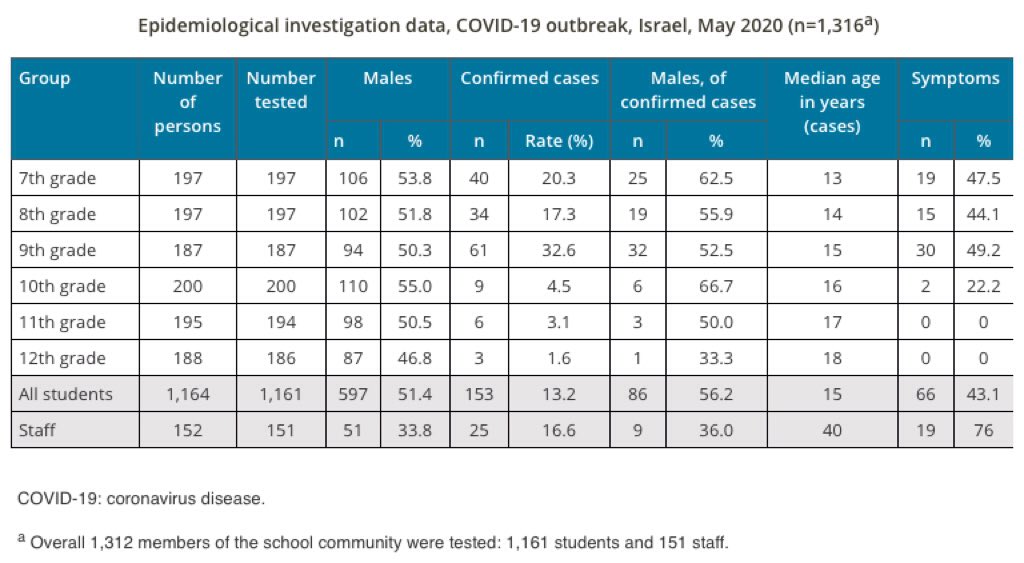Summary: schools can only reopen safely if community transmission is low, otherwise outbreaks will occur.
#SchoolReopening #edutwitter #edchat #edchatEU #auspol #Schulen #école #enfants
It contains evidence that children and adults are equally likely to be infected with #SARSCoV2 given the right circumstances.
Like the outbreak in Israel, the virus spread rapidly through the school community after being introduced.
In this cluster, most children did not transmit the virus, but two did. One of these transmitted the virus to their grandparents.
Children may have many more contacts than adults (particularly at school) which might offset any reduced tendency to transmit the virus.
That's still an important finding however, and should motivate us to eliminate community transmission of the virus so that schools can reopen safely.
Children may only be tested after an adult (whom they may have previously infected) develops symptoms.
The case may even go completely undetected because the child's viral load may have declined.
If these problems are in the data to begin with, the conclusions of the study are likely flawed.
The key point is that the studies in this thread show that substantial school outbreaks have occurred.
They will continue to occur if community transmission is not suppressed.
If there is community transmission, then outbreaks will occur.
Community transmission must be eliminated before schools can open safely.
This doesn't require high-tech solutions.
straitstimes.com/asia/east-asia…






